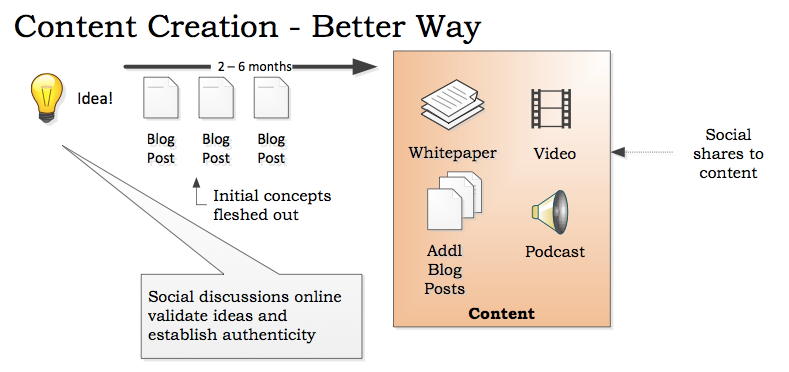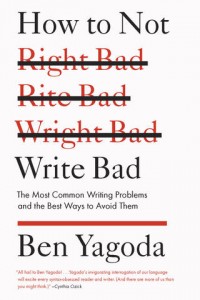Rethinking the traditional content process
John Refford’s tweets and posts about marketing technology caught my eye before I ever met him. I’m glad that Twitter connected us for some interesting conversations about the intersection between marketing, technology, and investments. At our last meeting, I thought, “I must ask John to guest-blog for me!” This post about content creation is the result.
Rethinking the Traditional Content Process
By John Refford
Just a few years ago the traditional content development process was really a “print” process, although it wasn’t called a “content development process,” but more likely “getting something up on the web.” Content producers slightly adapted their styles and processes and turned brochures into PDF documents placed on websites. These methods still exist today for some organizations (especially those not focused on e-commerce), but are in steep decline. However, a better process is emerging, as I’ll explain.
What’s Wrong With the Traditional Process?
The traditional content process, as shown in my diagram of “Content Creation – Old Way,” fails to deliver on several important measures. Let’s review four of them.
- It takes too long. Content is locked away inside your organization undergoing multiple revisions. And the longer it stays inside your organization, the more revisions are needed because the information has become stale.
- The information never gets customer-tested. Long content development cycles mean a lot of resources are sunk into one project. If you misread your target audience and the information does not resonate well with customers – that’s a large waste of resources.
- It tends to focus on one deliverable, such as a whitepaper, therefore missing numerous other communication vehicles such as video.
- Studies show fewer users are visiting corporate websites. If you’re not posting information in social media outlets, you’re not getting in front of your customers.
QUIZ: Is My Organization’s Content Process Out Of Date?
Here’s a quiz that will help you to assess whether your content development process is keeping up with the times. Answer this question: How many of the statements below hold true for your organization?
- PDFs hold a large portion of content on my website
- Our social tactics include sharing links to PDFs and press releases
- The organization does not take advantage of social media outlets
If you answered “yes,” to one of these questions, then your process needs some work.
A Better Way to Create Content
Things have changed with the rise of the social technologies. Platforms originally used by individuals—such as YouTube, blogs, Twitter and Facebook—are now used by brands as part of their broader communication strategy. The range of options, strategies and tactics have made online brand marketing much more complex.
With the rise of social media marketing, traditional content development processes go from old-fashioned to antiquated. Let’s look at a more contemporary content development process.
Given the wide array of options available, your content development process will undoubtedly be different than the image above. However, if you’re still developing content the old way, it’s time to rethink how you are creating content to support your brand objectives. The process in my diagram, “Content Creation – Better Way,” has four steps.
- Start with an idea. No change there from the old-fashioned approach.
- Validate the concepts of your ideas publicly. The value of sharing ideas early is that it gives organizations a chance to test them in the market before further developing them internally. Some vehicles for testing ideas include blog posts and discussion threads on social media sites like LinkedIn. This step provides feedback useful for fine-tuning a concept.
- Create multiple pieces of content that illustrate the concepts. Rather than a single deliverable, such as a whitepaper, create a series of pieces. This allows individuals to process the material several times in different formats. We know people learn differently; they learn by reading, seeing, hearing and doing. By providing different content formats you increase your audience’s ability to consume the information.
- Share the content socially. Sure you can share links to the content but you can also use the content to drive conversations. You might be in a position to allow your employees to share the content with their networks as well.
The Next Content Development Process?
Indeed, what does the future hold for content development? It remains to be seen but it will be shaped by today’s forces. Data will play a big part in content’s future. Consumers throw off tons of data from their online activities and as more devices come online (cars, appliances, offices, etc.), expect the amount of data collected to grow. This data will be analyzed in real-time and consumers will receive content that is highly contextual, personalized and provided just when they need it.
And what will become of traditional processes? In a recent Harvard Business Review article, Dana Rousmaniere predicts advertising will be replaced by new content processes by 2020 – that’s in less than seven years. You’d better start now.
__________________
John Refford writes about marketing technology on his blog, you can also follow him on twitter at @iamreff.



